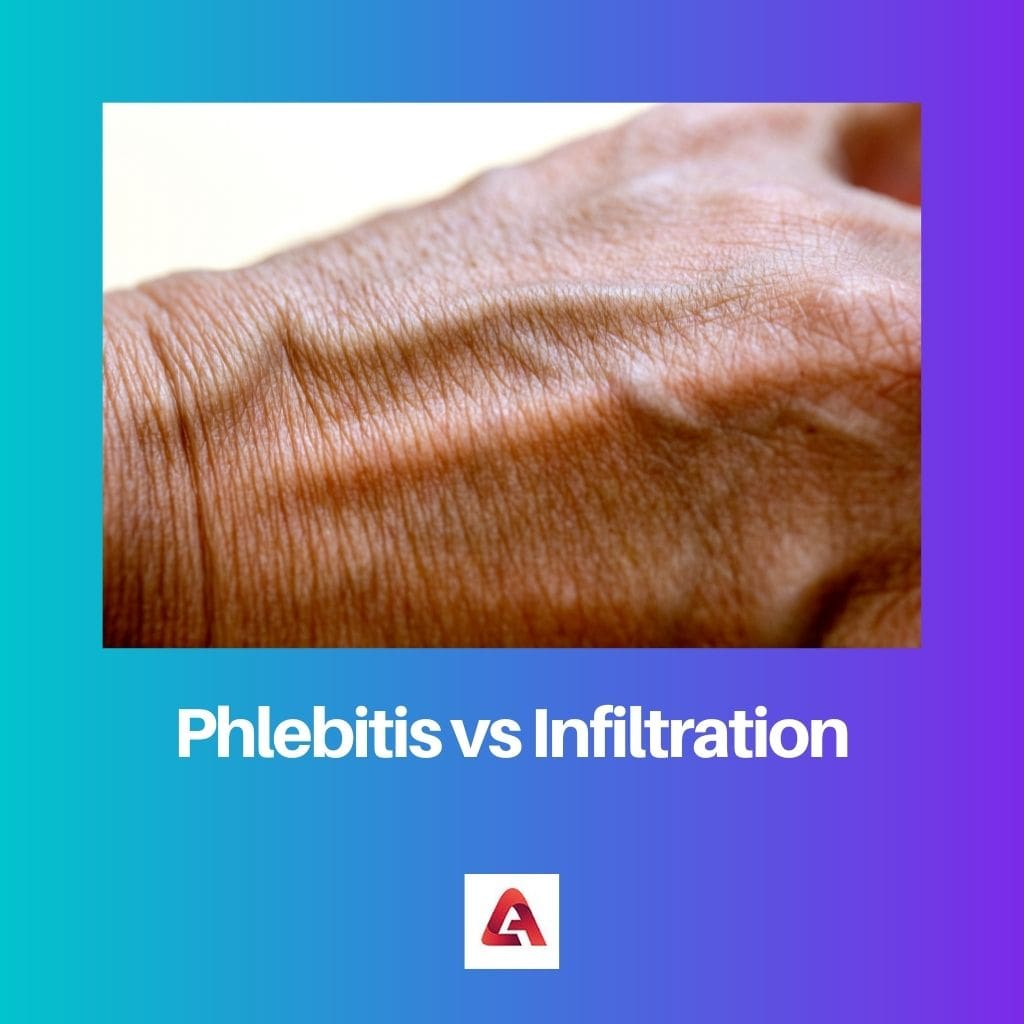Phlebitis can have other causal factors like bacterial infections and chemical reactions that cause the inflammation of veins. Moreover, the vein is inflamed in phlebitis, while when a patient experiences infiltration, the IV fluid percolates into the surrounding tissues.
This is a direct consequence of the catheter backing up from the insertion site and perforating the vein.
Key Takeaways
- Phlebitis is the inflammation of a vein, caused by infection, trauma, or a foreign substance in the vein; infiltration is the unintentional leakage of fluid or medication into surrounding tissue, caused by incorrect needle placement or dislodgement of a catheter.
- Phlebitis results in pain, redness, and swelling at the site of the affected vein; infiltration causes swelling, coolness, and discomfort in the surrounding tissue.
- Phlebitis requires medical attention to treat the underlying cause and prevent complications such as blood clots or infections; infiltration requires immediate action to stop the flow of fluid or medication and prevent further tissue damage.
Phlebitis vs. Infiltration
Phlebitis refers to vein inflammation, which can cause pain, swelling, and redness at the intravenous insertion site. Infiltration refers to leaking fluid or medication from the vein into the surrounding tissue, which can cause swelling, discomfort, and tissue damage.

Comparison Table
| Parameters of Comparison | Phlebitis | Infiltration |
|---|---|---|
| Definition | Inflammation of a vein that is caused by either IV catheters or bacterial or chemical infections. | Vascular trauma is caused by IV catheters dislodging into the vein or perforating the vein. |
| Fluid Discharge | No fluid discharge is noted. | The fluid is displaced into the surrounding tissue space. |
| Causes | Can be caused by either IV catheters or bacterial or chemical infections. | Caused by IV catheters dislodging into the vein. |
| Perforation | The vein is inflamed and not perforated. | The vein may be perforated when the catheter backs out from the insertion site. |
| Distinguished Symptoms | Palpable venous cords. | Fluid build-up, temperature drop, pale skin, no IV flow. |
| Blood Clots | Thrombosis is common with phlebitis. | Blood clots are not common in patients experiencing infiltration. |
What is Phlebitis?
The inflammation of the intimal layer of the vein is called Phlebitis. It is commonly experienced as a result of administering intravenous medications in patients.
Blood clotting near the surface of veins causes phlebitis in patients on IV medications. This is known as Thrombophlebitis.
The symptoms of phlebitis can range from pain, redness, edema (swelling), and tenderness to the most prominently noted symptom of palpable venous cords.
Although phlebitis can commonly affect patients from the age group of 41-60 years, it can also occur in younger people.
Phlebitis can be divided into 3 categories based on its causal factors. Mechanical phlebitis is the first category caused by the IV catheter’s insertion.
It is a treatable condition that medical testing must first ascertain. While superficial phlebitis can be treated easily, DVT or Deep Vein Thrombosis needs immediate medical attention.
The condition resolves within a week when treated with proper anti-inflammatory medication. Cold compresses and blood thinners are also used to treat the condition.
What is Infiltration?
Infiltration is another kind of vascular trauma commonly experienced by patients with IV catheters.
The most common symptom of infiltration is edema or swelling of the site. Fall in body temperature, pale skin, intense pain, numbness, and sensitivity at the site may be classified as distinguishing infiltration symptoms.
Older patients may be more susceptible to infiltration because of the enhanced fragility of their veins due to old age.
In severe cases, untreated infiltration can cause long-term tissue damage and necrosis. It can also cause severe nerve compression in the patient.
The treatment for infiltration includes immediate removal of IV catheters, inspecting the inflamed site, elevating the leg or arm, and using medications to treat severe cases of high-volume fluid build-up.
Main Differences Between Phlebitis and Infiltration
- The main difference between phlebitis and infiltration is the cause of their occurrence. While both can be IV catheter-related complications, phlebitis has a wider range of causal factors that may be responsible for the condition- like chemical and bacterial infections. However, infiltration is solely caused by a dislodged IV catheter.
- The second difference between these two medical conditions can be noted in terms of their very definition. Phlebitis is the condition that results in the inflammation of a vein, while infiltration results in the percolation of fluid and its consequent build-up in the neighboring tissue clusters.




